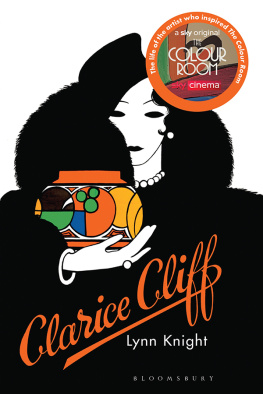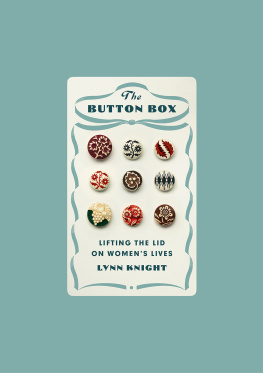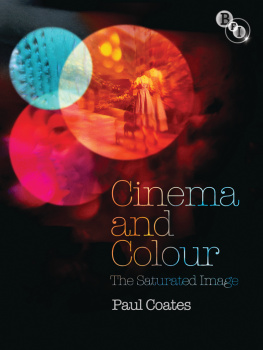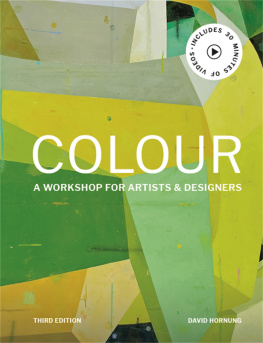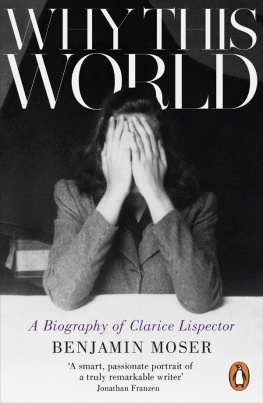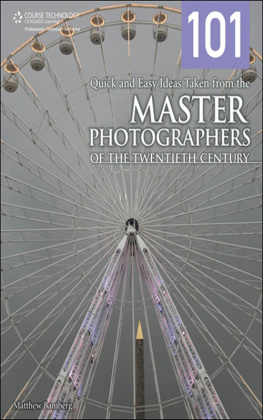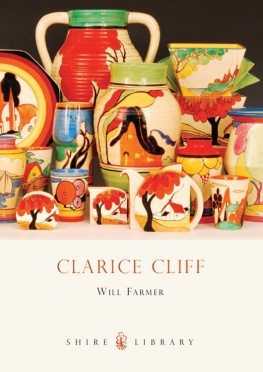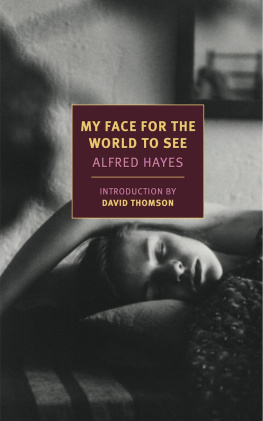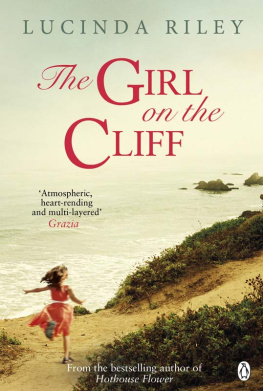LYNN KNIGHT is the author of the biography Clarice Cliff; a memoir, Lemon Sherbet and Dolly Blue: The Story of an Accidental Family; and The Button Box: The Story of Women in the 20th Century Told Through the Clothes They Wore. She has edited two collections of short stories, The Secret Woman: Classic Stories by Twentieth-Century Women Writers and Dangerous Calm: The Selected Stories of Elizabeth Taylor and abridged The Diaries of Beatrice Webb. She has worked as a Royal Literary Fund Fellow at Queen Mary University of London and at the British Library and currently hosts an RLF Reading Round group. She lives in London.

BLOOMSBURY PUBLISHING
Bloomsbury Publishing Plc
50 Bedford Square, London, WC1B 3DP, UK
29 Earlsfort Terrace, Dublin 2, Ireland
BLOOMSBURY, BLOOMSBURY PUBLISHING and the Diana logo are trademarks of Bloomsbury Publishing Plc
First published in Great Britain 2005
This edition published 2022
Copyright Lynn Knight, 2005
Clarice Cliff Bizarre and Fantasque are registered trademarks of Josiah
Wedgwood & Sons Ltd, Barlaston, Stoke-on-Trent. All images in this book are
reproduced with permission.
Lynn Knight has asserted her right under the Copyright, Designs and Patents Act, 1988, to be identified as Author of this work
All rights reserved. No part of this publication may be reproduced or transmitted in any form or by any means, electronic or mechanical, including photocopying, recording, or any information storage or retrieval system, without prior permission in writing from the publishers
Bloomsbury Publishing Plc does not have any control over, or responsibility for, any third-party websites referred to or in this book. All internet addresses given in this book were correct at the time of going to press. The author and publisher regret any inconvenience caused if addresses have changed or sites have ceased to exist, but can accept no responsibility for any such changes
A catalogue record for this book is available from the British Library
ISBN: PB: 978-1-5266-5474-8; eBook: 978-1-4088-0686-9
Typeset by Palimpsest Book Production Ltd, Polmont, Stirlingshire
To find out more about our authors and books visit www.bloomsbury.com and sign up for our newsletters
In memory of A. Thompson and E. Nash
CONTENTS

A Designer of Note: Miss Clarice Cliff, a distinguished figure in the Potteries, considers some of her work of modern decor and finds it (as others do) good.
COME TO LAWLEYS and Meet Miss Clarice Cliff, the Daily Mail announced in June 1930. To enable our many friends to see this female pottery artist, the advertisement continued, we have arranged a special Pottery Painting Demonstration.
A grainy black and white photograph shows Clarice Cliff examining the pattern on an Inspiration vase. She is dressed in a white technicians coat, with a dark skull cap pulled low on to her forehead. This was the brilliant young girl artist
Now, the London branch of Lawleys department store in Regent Street was opening its doors to a demonstration of the tableware responsible for Clarice Cliffs success. From Monday to Saturday,
Clarice Cliffs beginnings were shared by thousands of girls and women of the early 1900s. She was just another factory girl, with a rolled-up pinny in her coat pocket and nothing much expected of her future, but the development of her narrative runs counter to theirs, confounding and disputing expectations. Within the stronghold of traditionalism and class that was the Staffordshire Potteries, her success was without precedent. Although other women emerged as designers during this period most notably Susie Cooper it was a working-class woman whose story captivated the press.
Clarice Cliffs work struck the latest note during a period in which domestic design was becoming a matter of fashion, as well as a significant force in debates about the role of the industrial designer. The vibrancy of her patterns and audacity of her shapes enabled her to capture and project modernity; commercial courage allowed her to influence and interpret new trends. The exceptional versatility for which Clarice Cliff was praised led to her becoming an enormously prolific designer: some 270-plus Bizarre patterns alone and hundreds of shapes are attributed to her name. Today, Clarice Cliffs work regularly commands thousands of pounds at auction. Even those with no especial knowledge of, or interest in, design can recognise a piece of Clarice Cliff; for many she epitomises Art Deco. (For some, she represents everything dislikeable about the style.)
Although Clarice Cliffs professional life was widely documented, she did not leave behind and, most likely, did not write the letters and journals that generally furnish the private lives of public individuals. Factory hours afforded little time for leisure, and working-class young women were, in any case, not encouraged to write about themselves: their lives were hardly thought worthy of record. Clarice Cliffs silence is doubly insistent: by the time she had stories of her own, she had reason to withhold them. By the late 1920s, she was familiar with the snatched meetings and discreet hotels that characterise a relationship with a married lover.
Clarice Cliffs story belongs not to London or Paris although both cities figure within it but to industrial Stoke-on-Trent, a harsh creative backdrop, with far less scope for the unconventional. An environment of strong local flavours, it stamps its power upon the personalities it creates. Though the writer Vera Brittain knew Staffordshire only as a very young girl, she described herself as Staffordshire to the core. Clarice Cliff spent her life in the Potteries. Its social and cultural history is stitched into the fabric of her existence.
Although she worked within a community, Clarice Cliff was neither part of the establishment nor an adherent of provincial codes, yet despite her apparent bravado, she was an intensely private woman. Hers was a life of contradictions in a period rife with contradictions of its own. The inter-war years ushered in the modern: the advent of the wireless and talking films revolutionised communication and changed the cultural fabric; mass production and labour-saving devices overhauled domestic and industrial life. Art, literature and design thrilled with the new, old forms were overthrown and risks embraced, but this was only part of the picture. Those years were also characterised by economic uncertainty, the Depression and social flux by retrenchment as well as possibility. For most women of the period, the 1920s and 30s were years of restricted employment opportunities and rigid social and sexual mores. The penalties for those who transgressed were great; in small provincial towns, like those comprising the Potteries, the risks were even greater.
Good design does not draw attention to itself, and nor should women, so say tenets of the period (and thereafter). Yet Clarice Cliffs exclamatory designs could take away the breath. Though her vocabulary was domestic tableware, she was nevertheless a radical, a modernist in spirit, if not in the capitalised letters of design terminology. Like many modernists, she was an outsider, reconfiguring the landscape, extending and reshaping the boundaries of professional life for women. There were too few women like her for Clarice Cliff to fit comfortably within her milieu. Most women leave to break the rules; Clarice Cliff stayed and broke them. Who was the woman in the black skull cap, to whom romance so readily attached itself? Who was the brilliant young girl artist, Clarice Cliff?
Next page
